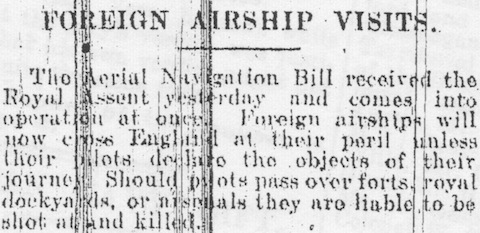Friday, 28 February 1913
On the one hand, there are more mystery airships reports (many old but some new) in today’s papers than ever before, mostly in the provincial press. On the other, some editors seem to have grown weary of the subject: for example, whereas both the Daily Express and the Standard have carried multiple articles on the […]









